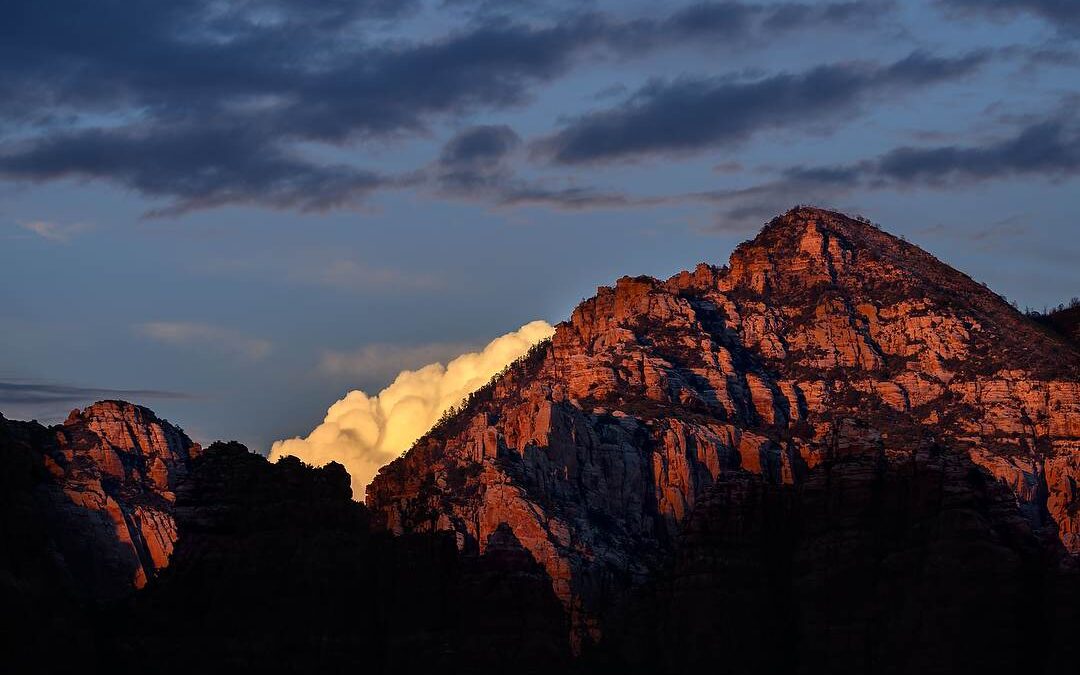That’s the question I hear the most when people find out I’m leading a photography trip there in late summer. After all, Arizona is HOT, right? So Sedona in August must be broiling, right? Well, the answer to that is the answer that works for most photo questions, “it depends.” If, like me, you live around Kansas City, Sedona will probably be cooler than home. But the best answer, when it comes to photography, is two part: one, August is the off-season there, so it’s less crowded. And two, afternoon thunderstorms are common that time of year. And both of those can mean good things when it comes to photography, perfect for a four-day photo workshop.

I live in Overland Park, KS., just outside of Kansas City, MO. Tuesday through Friday that week, it was over ten-degrees cooler in Sedona. I go to Sedona in August to escape the heat!
That’s why last month was the third time I’ve led a trip to Sedona in August. Sure, it’s hot, but less so than a lot of places. Remember, Sedona is located over 4000-feet in altitude, which makes it cooler than places like Phoenix, and the humidity is often relatively low as well. Less people, of course, means less traffic. Even on our day trip to the Grand Canyon, we were able to park fairly close to the places we wanted to see (late August means most family summer vacations are over, thus less people).
But the best reason to visit Sedona is the abundant photo opportunities. You’re surrounded by so many red rock formations, and different ways to view or get to them, that each trip there I’ve found neat new places to take my group.
Here are a few photos from last month’s outing. And if you’re interested in joining me on a future photo trip to Sedona, let me know.
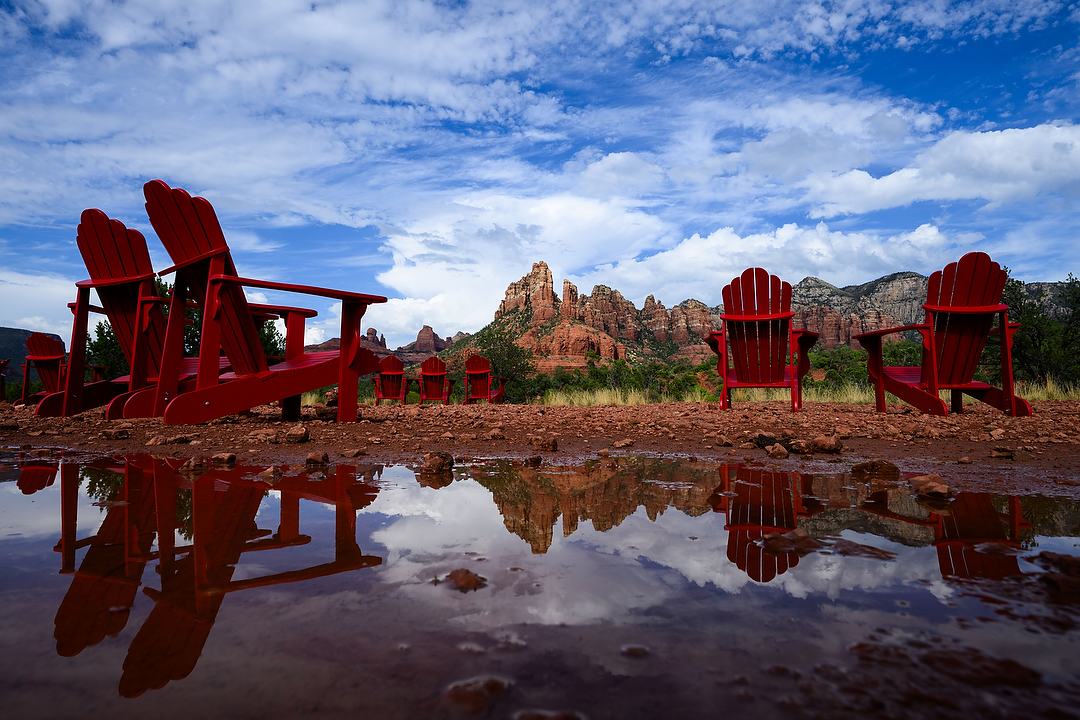
I chose the Hotel Arabella as our base partly because of this beautiful viewpoint just behind the property. Nikon Z 8, Manual exposure, Sunny white balance, ISO 64, 1/125 at f/11 in Matrix metering, 0.0 EV, Nikkor Z 14-24mm f/2.8 S lens at 19mm.
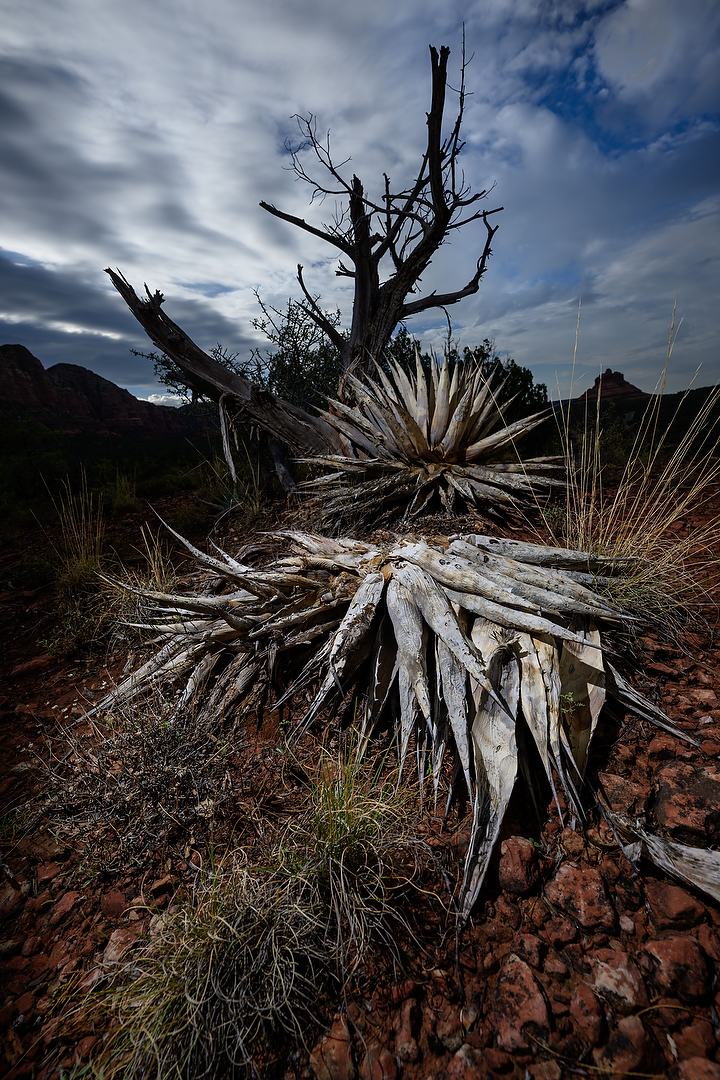
We were out for sunrise our first morning, to explore one of the better trails I’ve found. However, it took about an hour for the sun to punch through the clouds, so I demonstrated why I often carry a flash with me. Holding it above and to the left, I could create my own sunlight. Nikon Z 8, Manual exposure, Sunny white balance, ISO 64, 1/250 at f/10 in Matrix metering, Nikkor Z 14-24mm f/2.8 S lens at 16mm, Nikon SB-5000 speedlight.
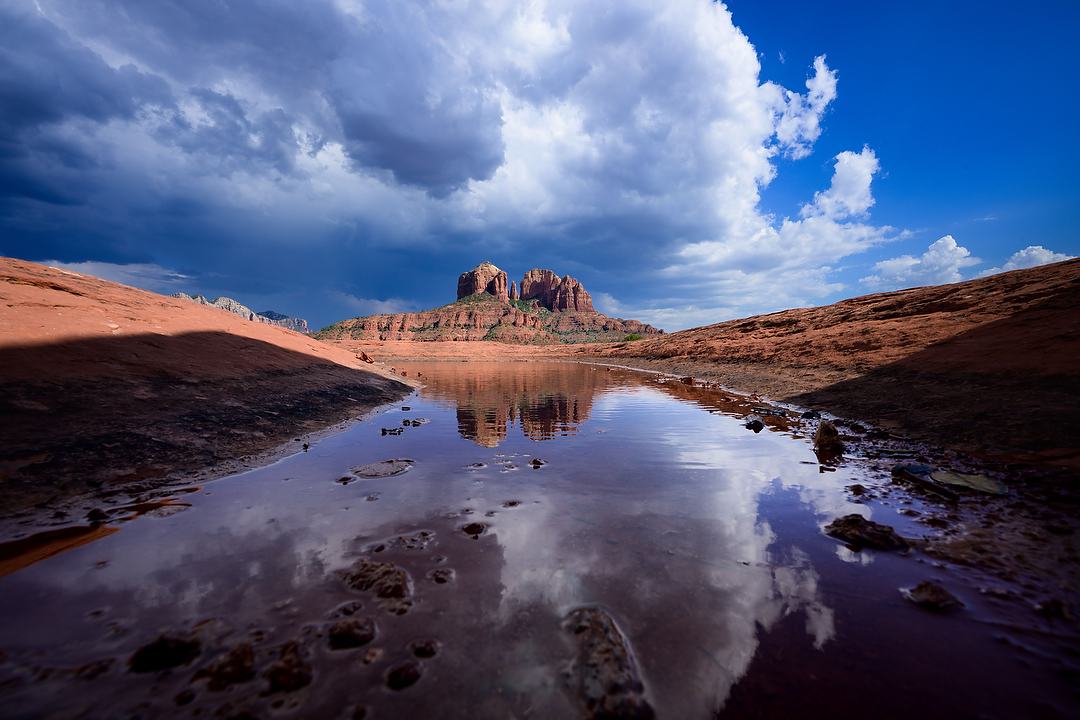
Occasional storms meant we had several opportunities to use the resulting water for reflections. That’s Cathedral Rock in the background. Nikon Z 8, Aperture Priority, Sunny white balance, ISO 64, 1/60 at f/14 in Matrix metering, 0.0 EV, Nikkor Z 14-24mm f/2.8 S lens at 15mm.
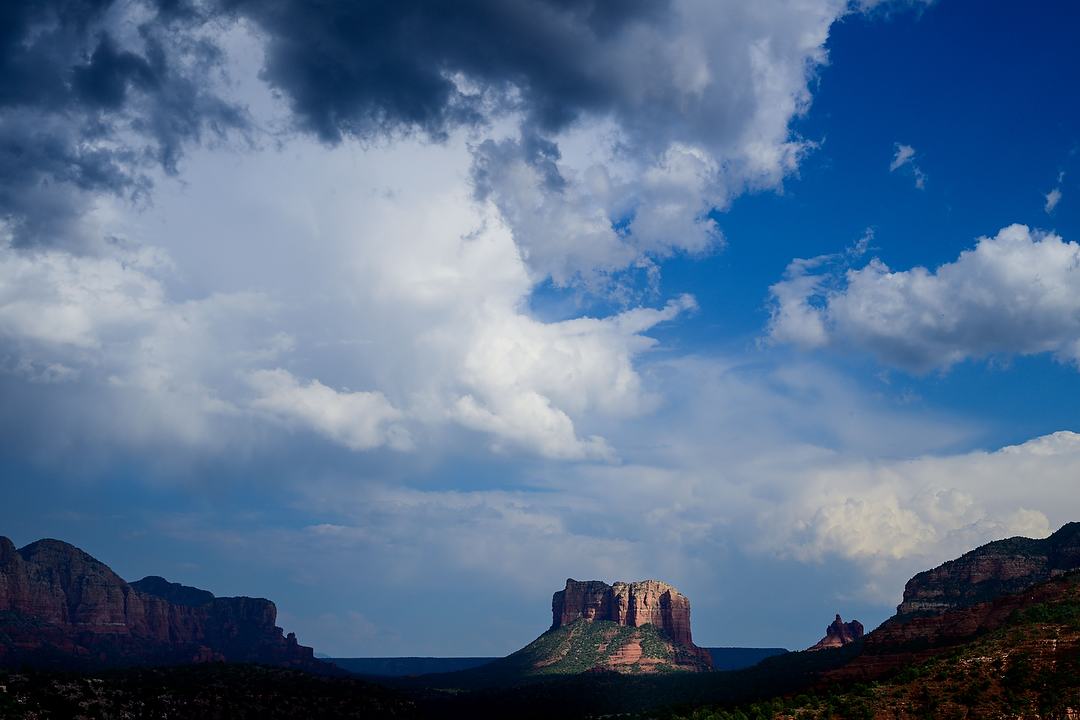
And of course, those storms come with great clouds, which we incorporated into our photos as often as possible. Nikon Z 8, Aperture Priority, Sunny white balance, 5210K, ISO 100, 1/1600 at f/5 in Matrix metering, +0.3 EV, Nikkor Z 24-120mm f/4 S lens at 46mm.
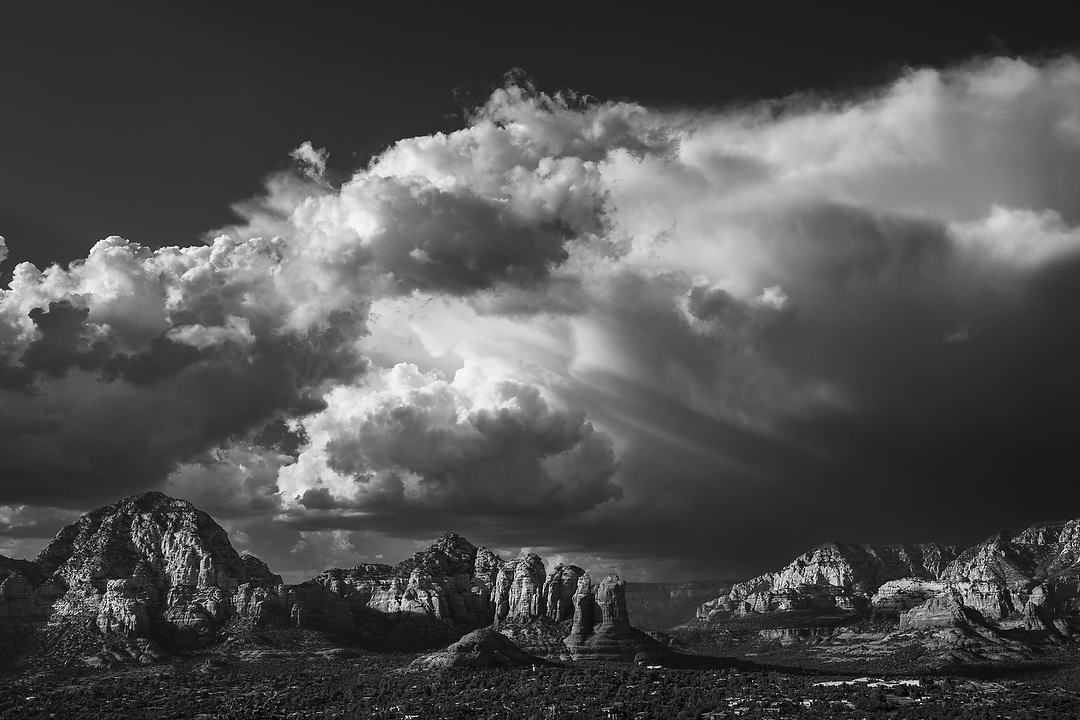
Those same clouds brought thunder and lightning, so we moved to Airport Mesa, which I knew would give us a different view. And with those streaks of light, I decided to switch over to black-and-white for a more dramatic picture. Nikon Z 8, Aperture Priority, Sunny white balance, ISO 100, 1/500 at f/8 in Matrix metering, +0.3 EV, Nikkor Z 24-120mm f/4 S lens at 38mm.
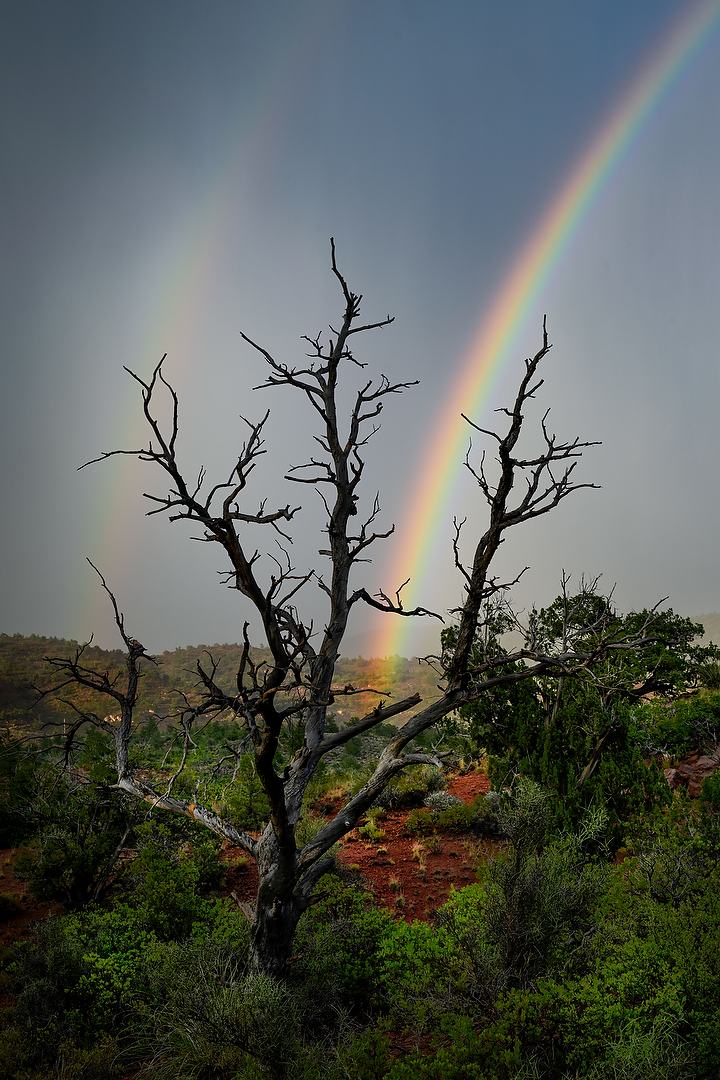
Storms blocked the sunset light at the location I’d picked that day, but did give us a nice double-rainbow. I’m using a polarizing filter to help make it more visible. Nikon Z 8, Aperture Priority, Sunny white balance, ISO 64, 1/60 at f/9 in Matrix metering, -0.3 EV, Nikkor Z 24-120mm f/4 S lens at 51mm.
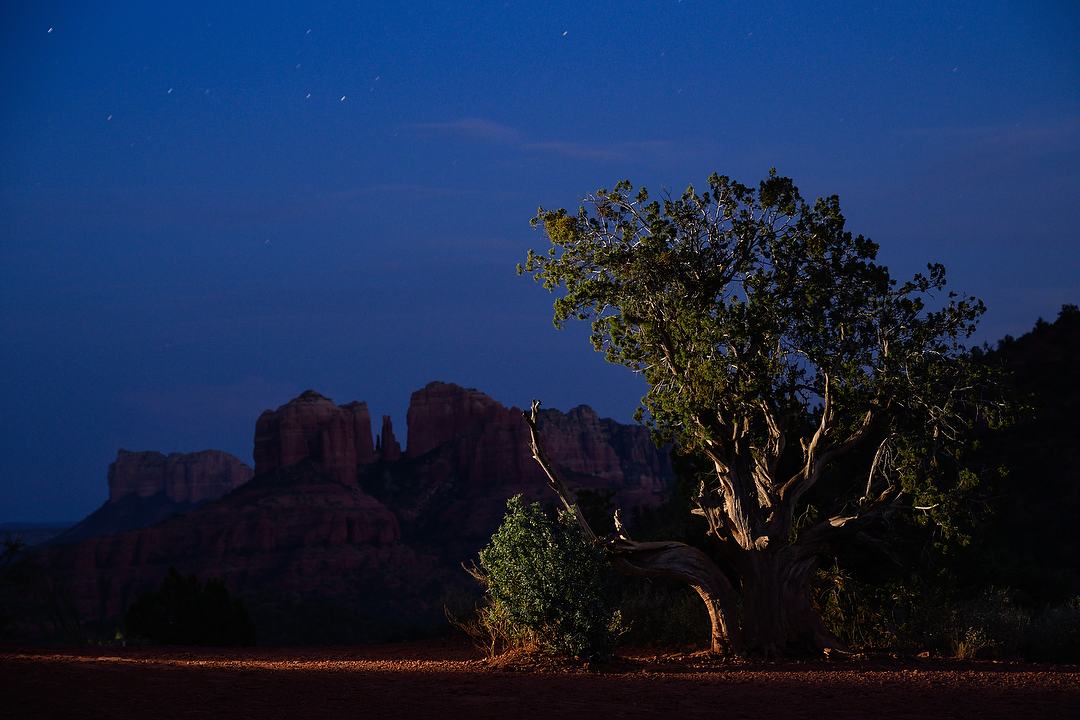
This was where we did our night shoot that first evening. I used a single Lume Cube at left to light this gnarled old tree, and balanced the intensity of that light to fit in with the fading sky behind Cathedral Rock. Nikon Z 8, Manual exposure, Sunny white balance, ISO 800, 25-seconds at f/5.6 in Matrix metering, 0.0 EV, Nikkor Z 24-120mm f/4 S lens at 74mm.
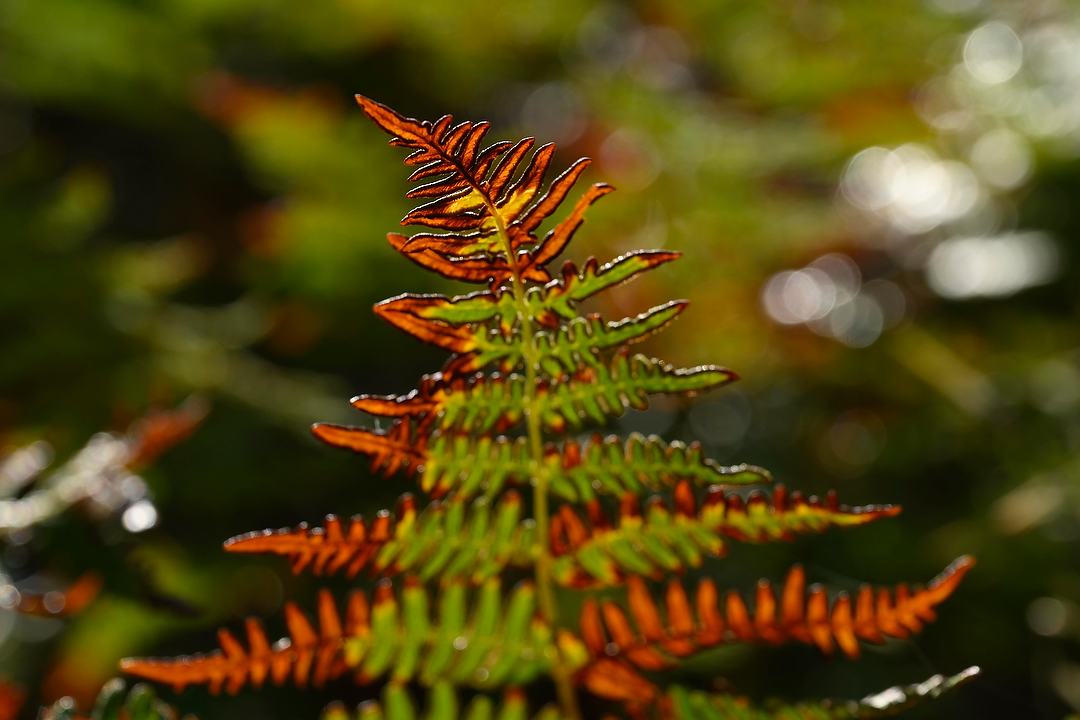
Thanks to the water that Oak Creek Canyon’s named for, it’s lush. That was our first location on day two, and gave us an opportunity to make different types of photos from the dry, rocky landscapes Sedona is best known for. Nikon Z 8, Aperture Priority, Sunny white balance, ISO 200, 1/400 at f/8 in Matrix metering, -0.3 EV, Nikkor Z 24-120mm f/4 S lens at 120mm.

Another scene from Oak Creek Canyon, but this time I used a ten-stop neutral density filter, and a tripod, to blur the movement of the water. Nikon Z 8, Aperture Priority, Sunny white balance, ISO 64, 20-seconds at f/11 in Matrix metering, -1.0 EV, Nikkor Z 24-120mm f/4 S lens at 24mm.
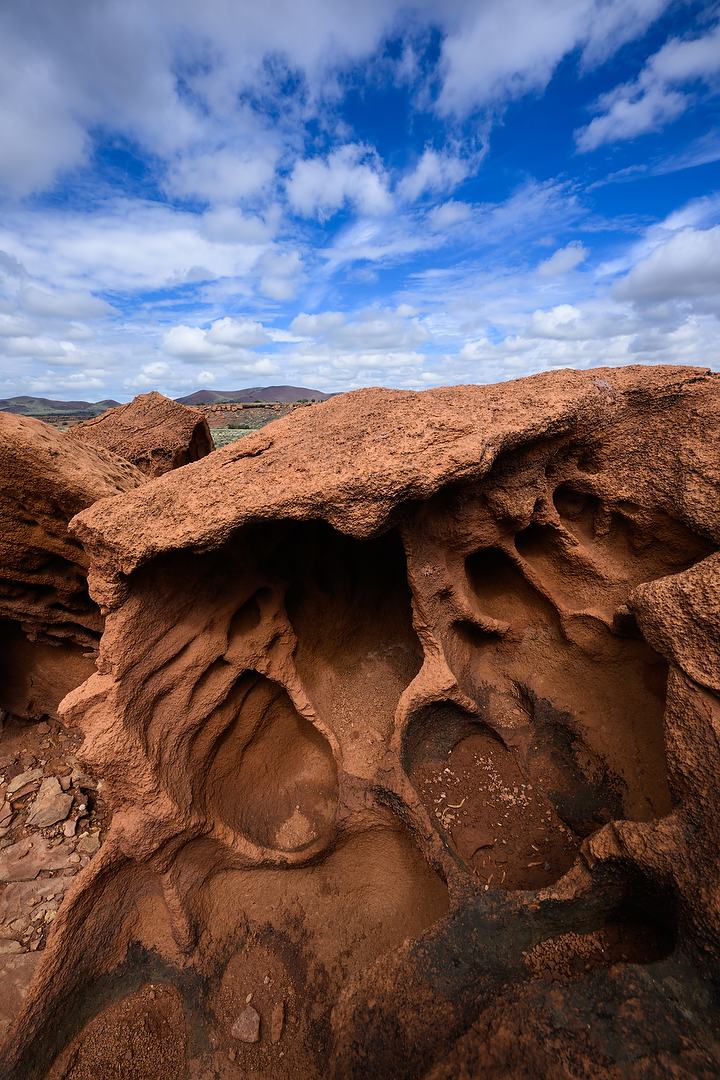
Wupatki National Monument is a great place to take a break on the drive up to the Grand Canyon. Ancient Native American dwellings are the main feature there, but this weathered sandstone was what caught my eye. Nikon Z 8, Aperture Priority, Sunny white balance, ISO 100, 1/50 at f/18 inMatrix metering, -0.3 EV, Nikkor Z 14-24mm f/2.8 S lens at 14mm.
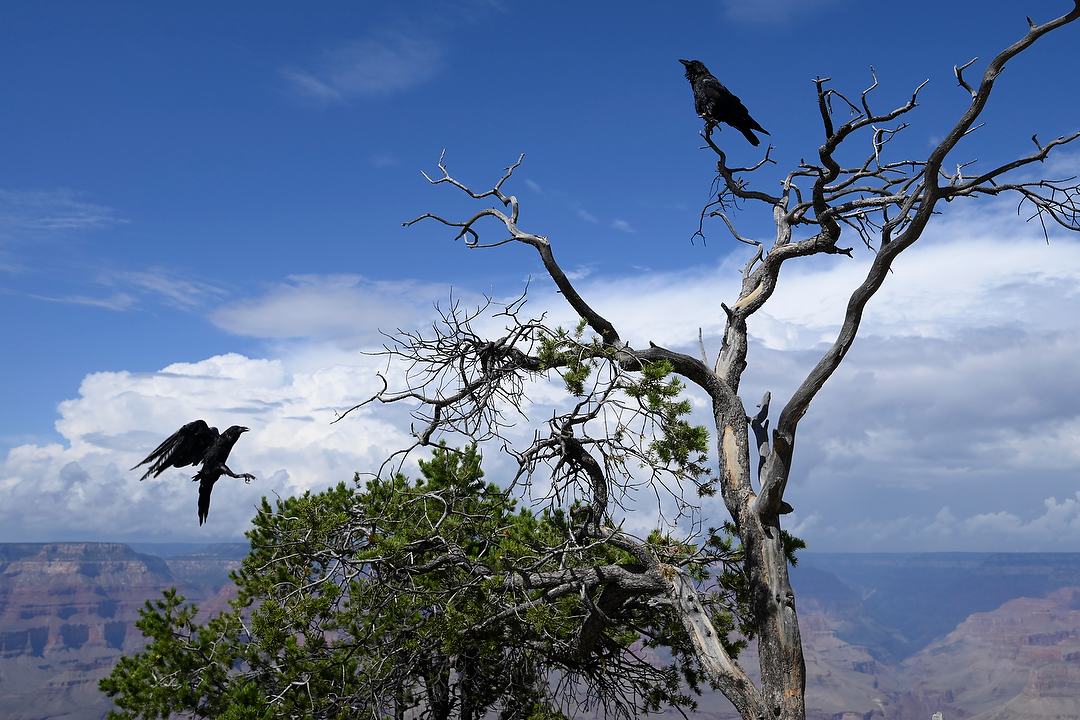
Sometimes you just get lucky. I was moving closer to photograph this raven at the top of the tree when it was joined by another. Nikon Z 8, Aperture Priority, Sunny white balance, ISO 160, 1/1000 at f/8 in Matrix metering, 0.0 EV, Nikkor Z 14-24mm f/2.8 S lens at 23mm.
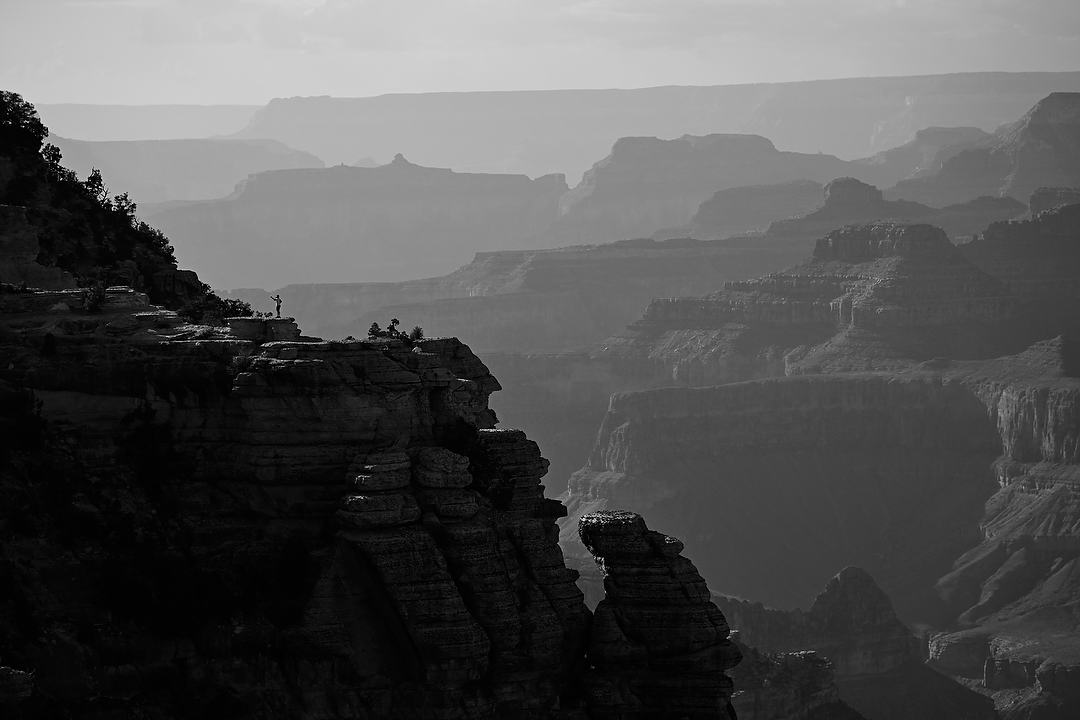
Haze, created by smoke from fires up north, took away some of the drama of the Grand Canyon. To counter that, I often switched to black-and-white. Nikon Z 8, Aperture Priority, Sunny white balance, ISO 64, 1/250 at f/5.6 in Matrix metering, -0.7 EV, Nikkor Z 24-120mm f/4 S lens at 120mm.
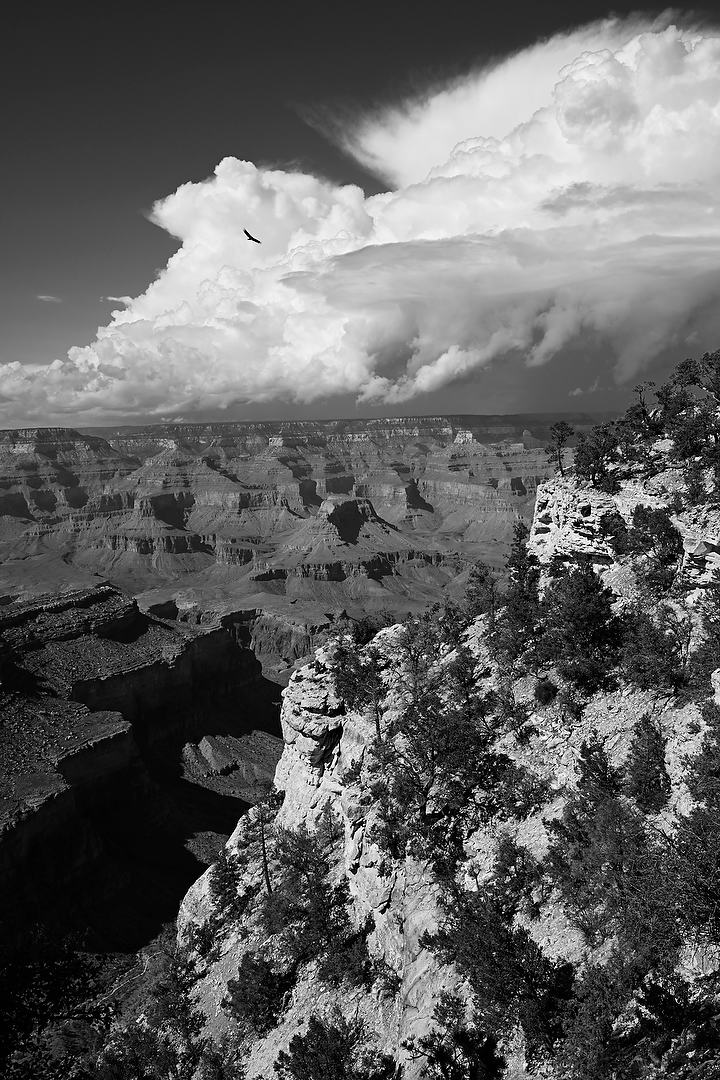
Looking at the weather forecast, I delayed our visit to Grand Canyon by one day since it called for storms clearing the next afternoon. Turns out the forecast was right, and we were rewarded with great skies. I’m always amazed at how much impact one small thing can have in a photo. In this case, it’s that lone raven, gliding silhouetted against the white clouds. Nikon Z 8, Aperture Priority, Sunny white balance, ISO 64, 1/250 at f/10 in Matrix metering, -0.3 EV, Nikkor Z 24-120mm f/4 S lens at 29mm.
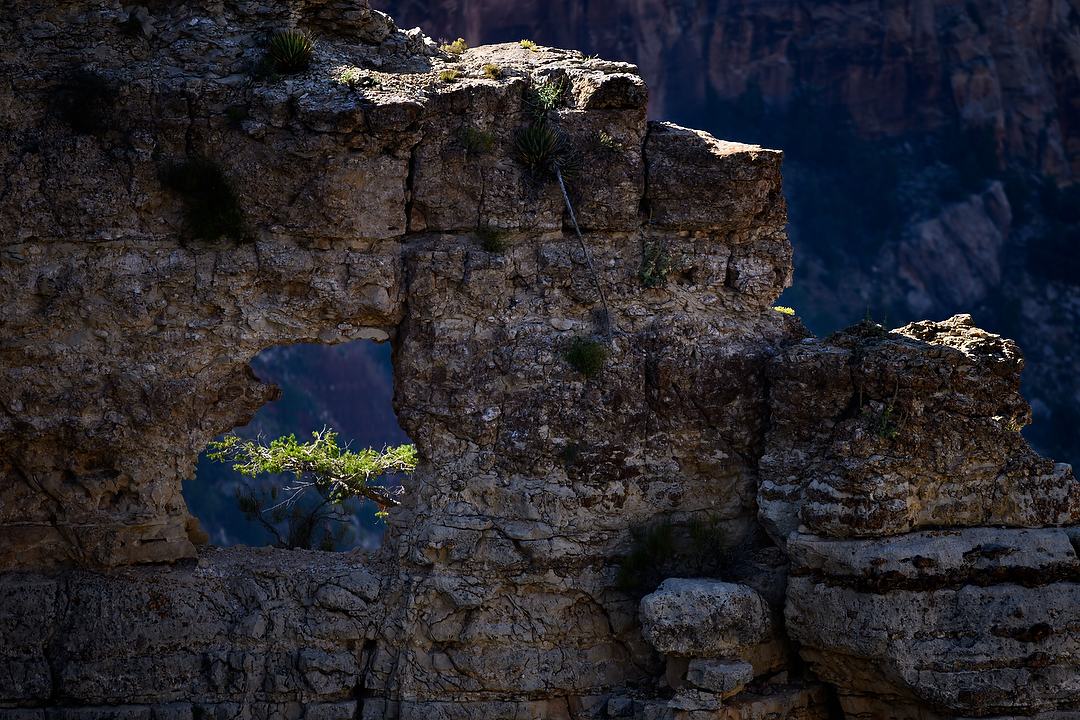
I often remind my groups to look for small areas of light, and then expose for them. That’s what I did here, to show off that small tree perfectly framed through a hole in the stone wall. Nikon Z 8, Aperture Priority, Sunny white balance, ISO 100, 1/250 at f/5.6 in Matrix metering, -1.0 EV, Nikkor VR 70-300mm f/4.5-5.6E lens at 300mm.
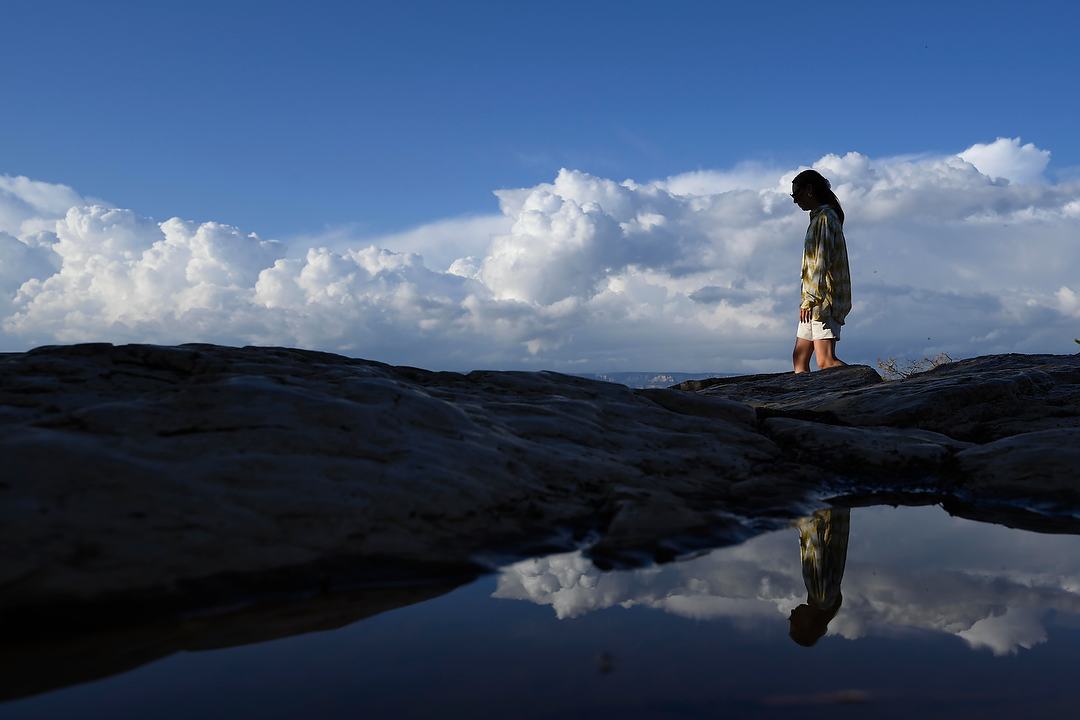
There was heavy rain two days before, which again let us take advantage of standing water to work with reflections. Nikon Z 8, Manual exposure, Sunny white balance, ISO 64, 1/320 at f/8 in Matrix metering, -0.3 EV, Nikkor Z 14-24mm f/2.8 S lens at 24mm.
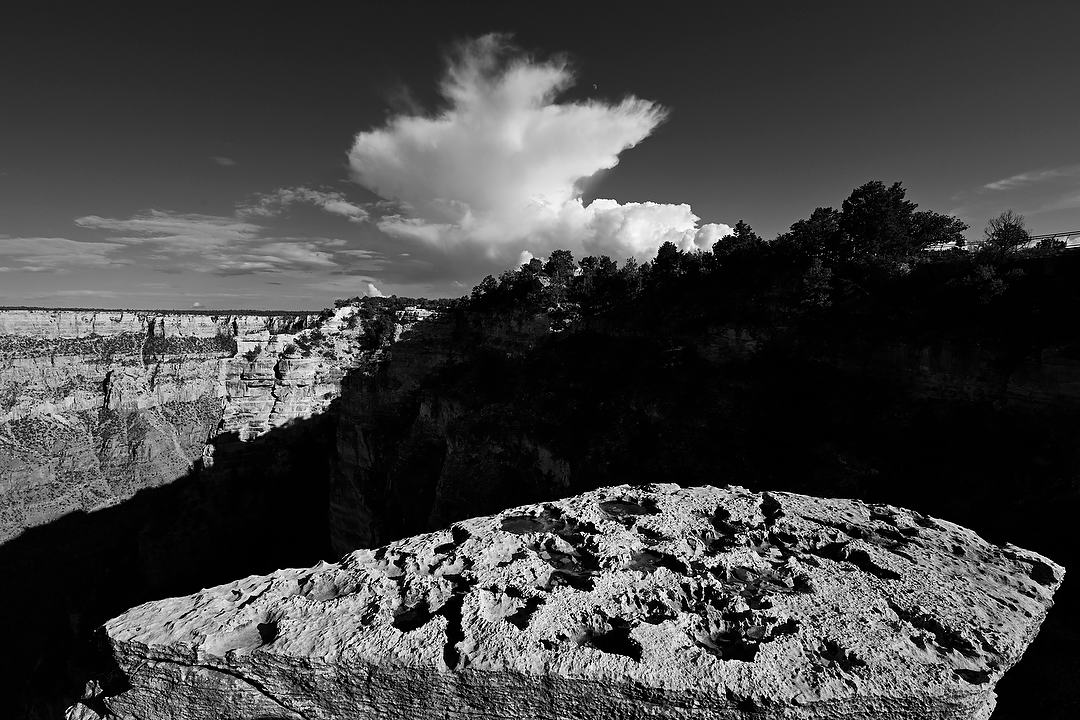
A strong foreground subject can often make a landscape picture even more interesting, like this heavily weathered rock. Once again I chose to shoot in black-and-white, to play off the strong contrast in the scene. Nikon Z 8, Aperture Priority, Sunny white balance, ISO 64, 1/160 at f/11 in Matrix metering, -1.3 EV, Nikkor Z 14-24mm f/2.8 S lens at 15mm.
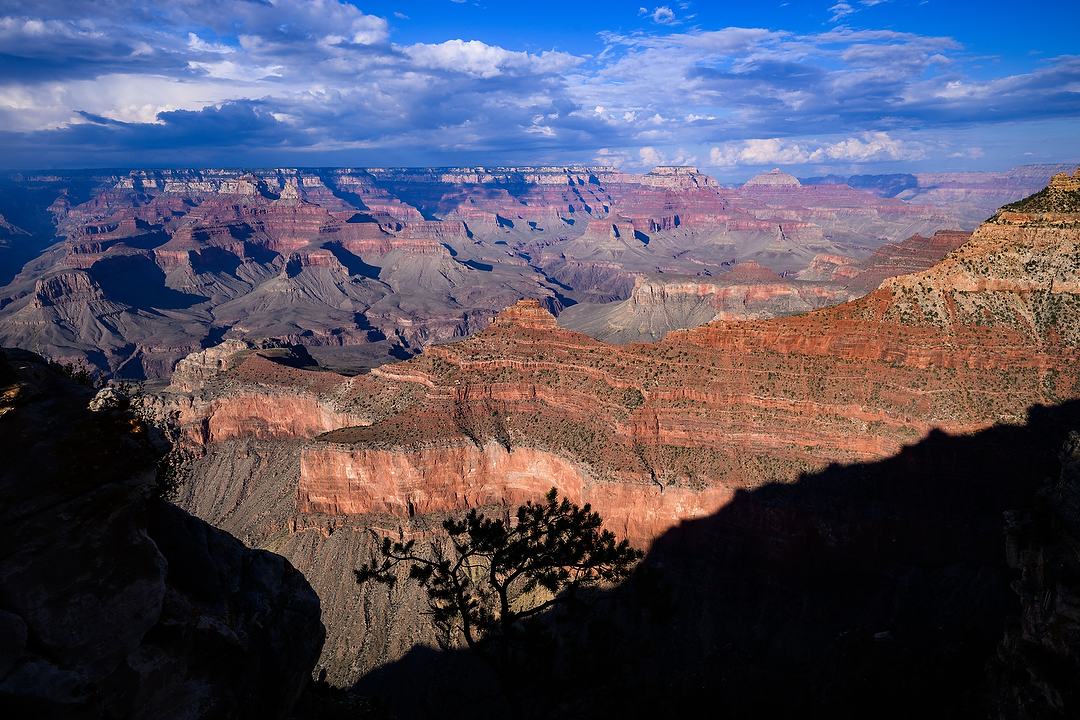
I found this spot at an overlook near Mather Point, and returned over and over as the light changed throughout the afternoon. The heavy foreground shadow created a border at the bottom of the frame, and the lone tree anchors that shadow. Nikon Z 8, Aperture Priority, Sunny white balance, ISO 64, 1/200 at f/10 in Matrix metering, -1.0 EV, Nikkor Z 14-24mm f/2.8 S lens at 24mm.
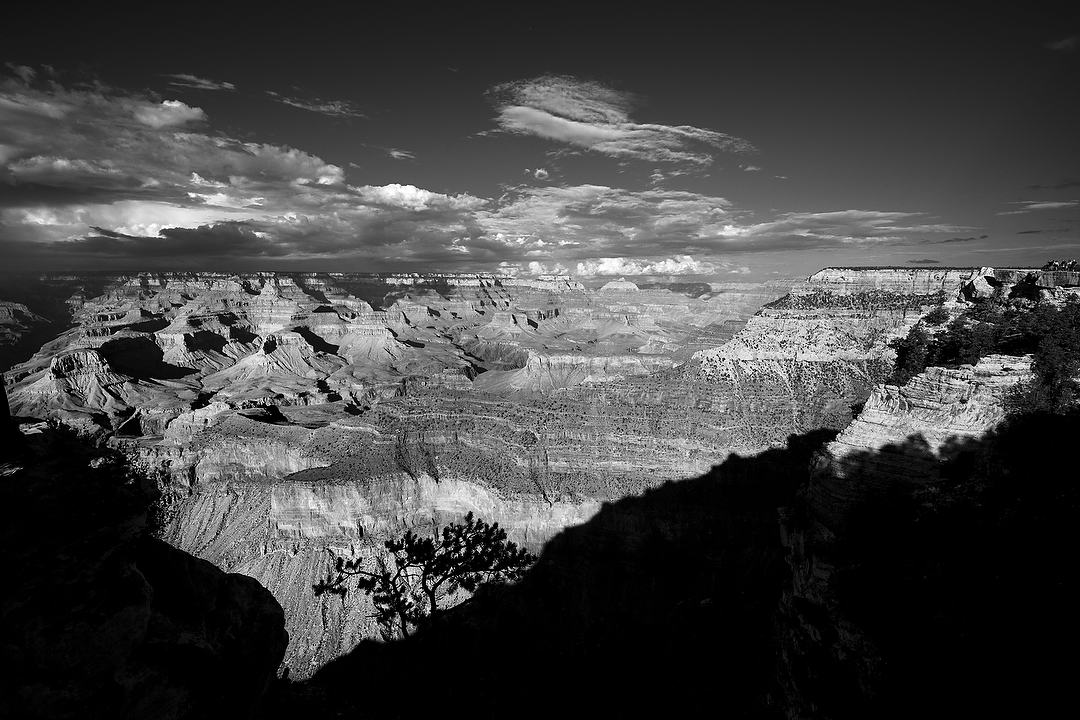
Same scene, same location, but now with different clouds and in black-and-white. Nikon Z 8, Aperture Priority, Sunny white balance, ISO 64, 1/320 at f/10 in Matrix metering, -1.3 EV, Nikkor Z 14-24mm f/2.8 S lens at 17mm.
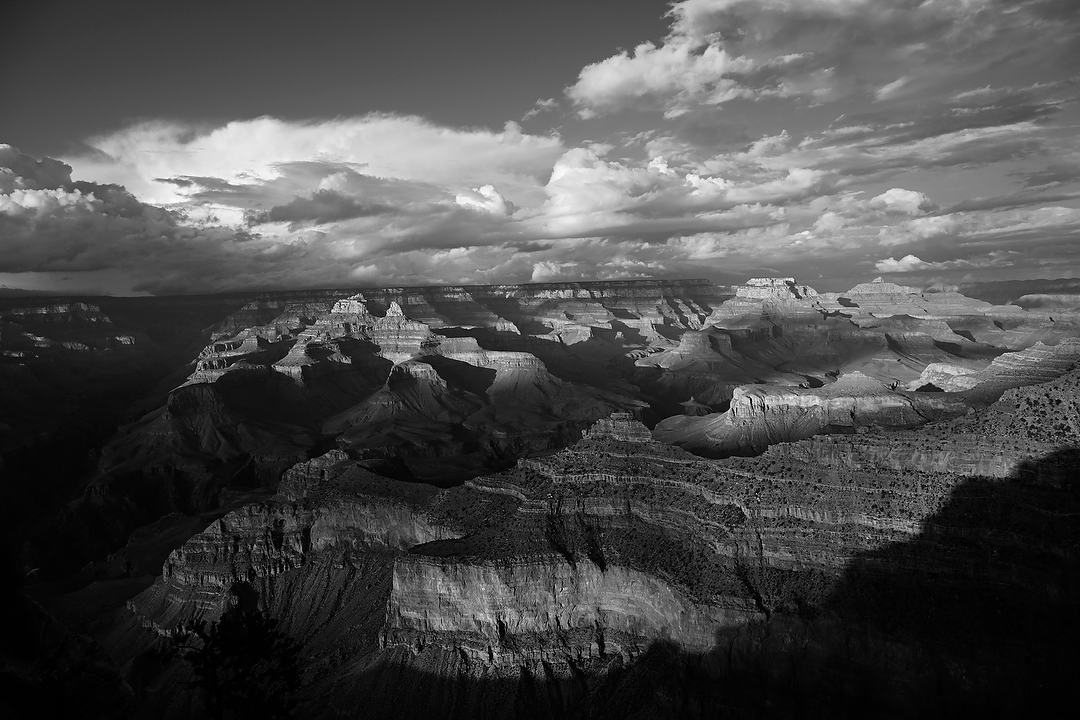
The same overlook again, this time just a few feet further left, and now streaks of light paint the canyon walls. Nikon Z 8, Aperture Priority, Sunny white balance, ISO 64, 1/250 at f/5.6 in Matrix metering, -0.7 EV, Nikkor Z 24-120mm f/4 S lens at 24mm.
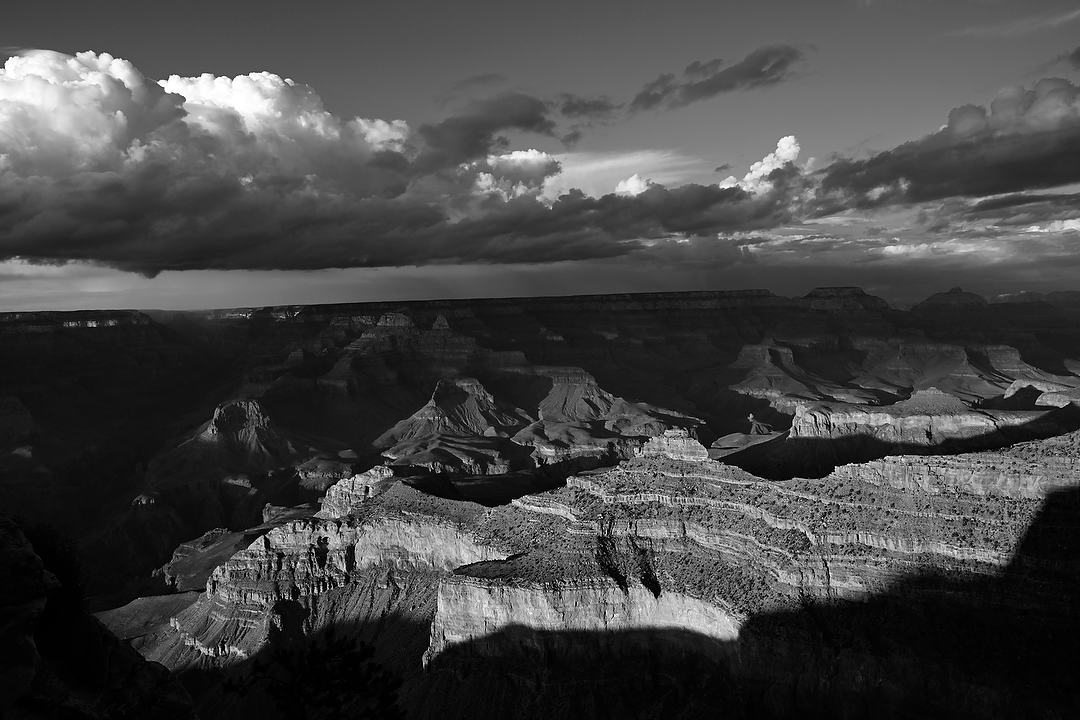
Same place once more, and now clouds to our west made sure the light in the Grand Canyon kept changing, and kept us shooting pictures. Nikon Z 8, Aperture Priority, Sunny white balance, ISO 64, 1/80 at f/8 in Matrix metering, -1.0 EV, Nikkor Z 24-120mm f/4 S lens at 24mm.
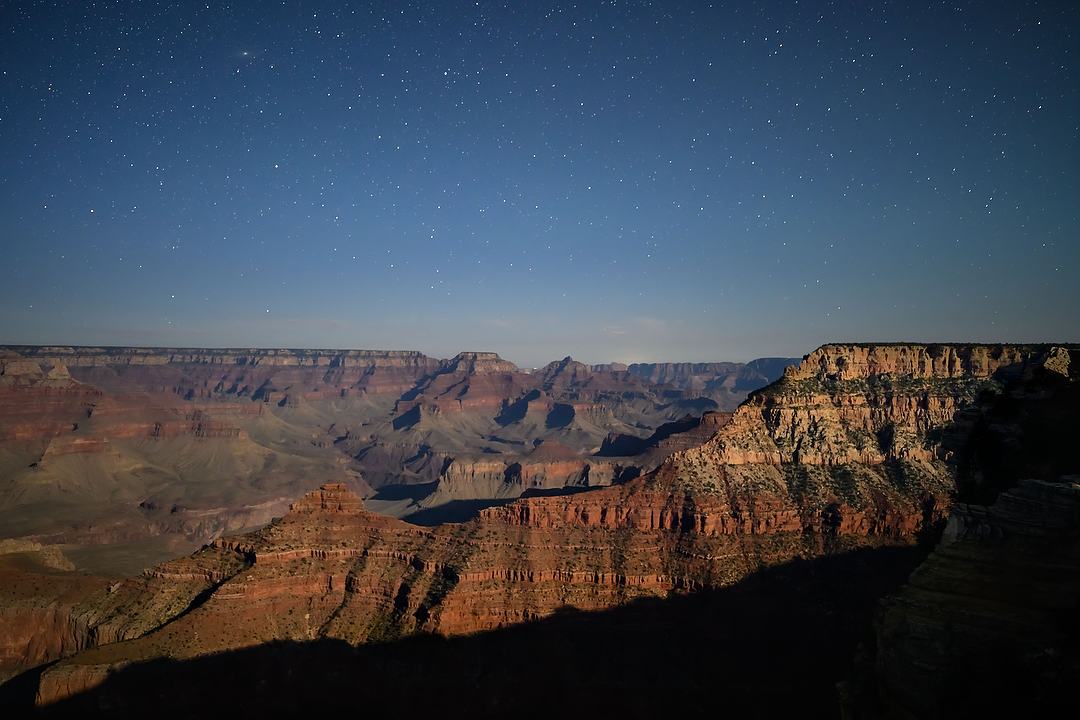
And the last shot of this third day, again at that same overlook, only now at night. Instead of the sun, the moon is now lighting some parts of the canyon while leaving other parts in shadow. Nikon Z 8, Manual exposure, Sunny white balance, ISO 3200, 20-seconds at f/2.8 in Matrix metering, 0.0 EV, Nikkor Z 14-24mm f/2.8 S lens at 24mm.
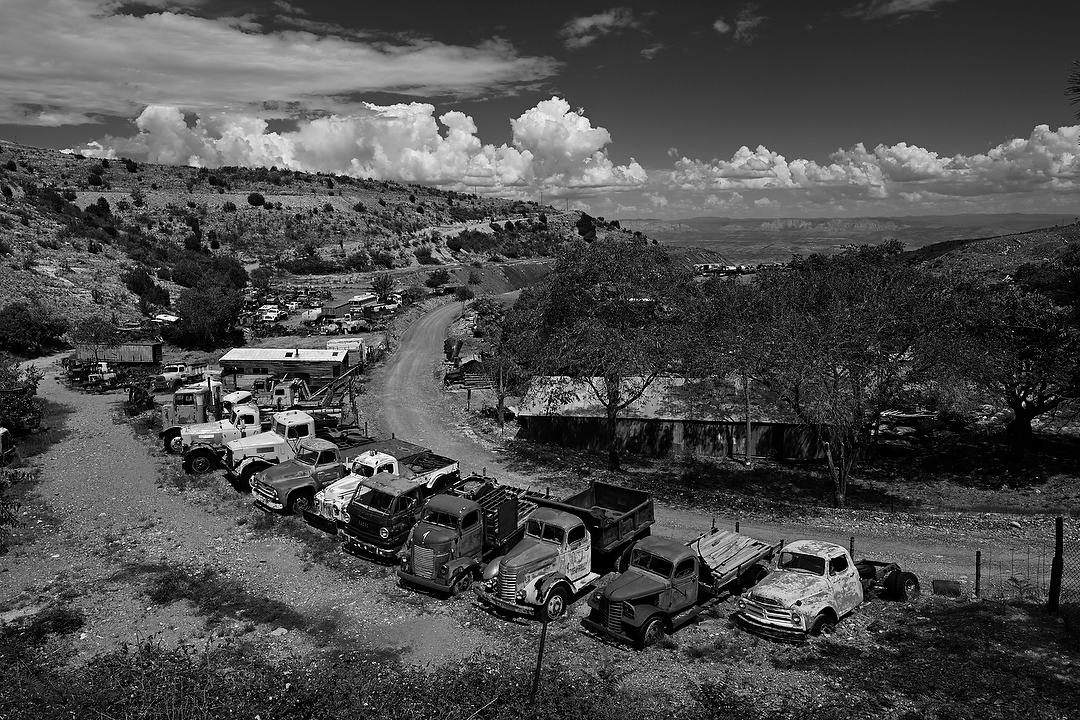
After the long Grand Canyon adventure the day before, we started our final day a little later with lunch in Jerome, AZ, followed by a visit to the King Gold Mine. Part historic mine site, part junkyard, it’s a treat to explore. Nikon Z 8, Aperture Priority, Sunny white balance, ISO 64, 1/500 at f/8 in Matrix metering, -1.0 EV, Nikkor Z 14-24mm f/2.8 S lens at 24mm.
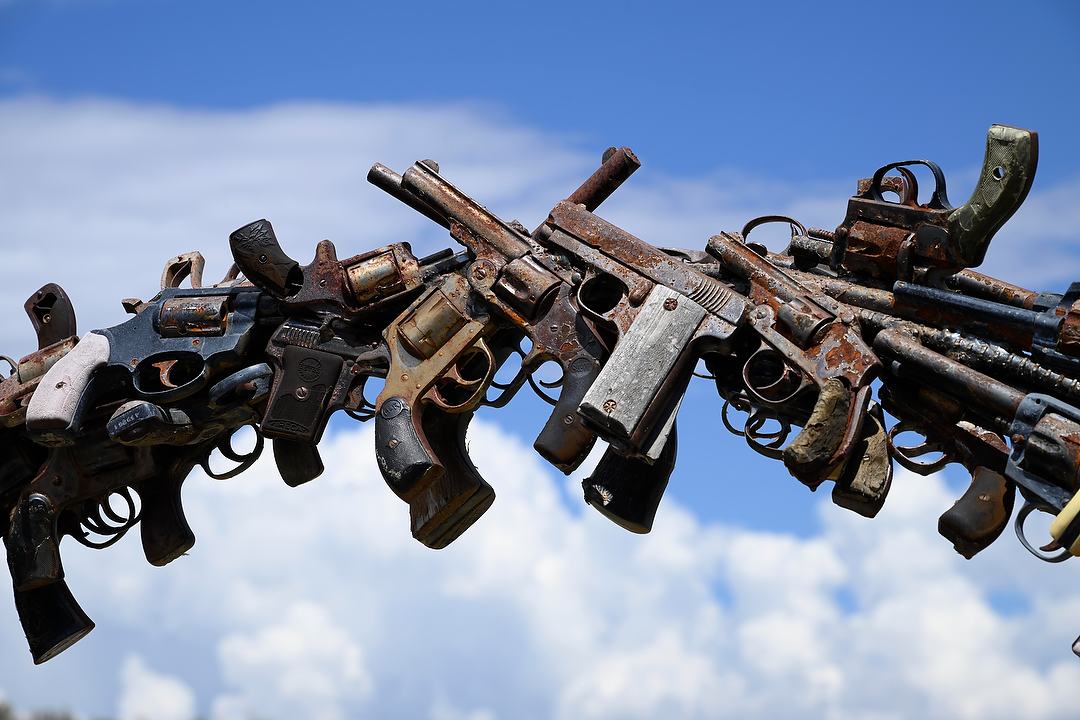
An arch made of guns, just one of the many curiosities found at the King Gold Mine. Nikon Z 8, Aperture Priority, Sunny white balance, ISO 64, 1/125 at f/13 in Matrix metering, 0.0 EV, Nikkor Z 24-120mm f/4 S lens at 120mm.
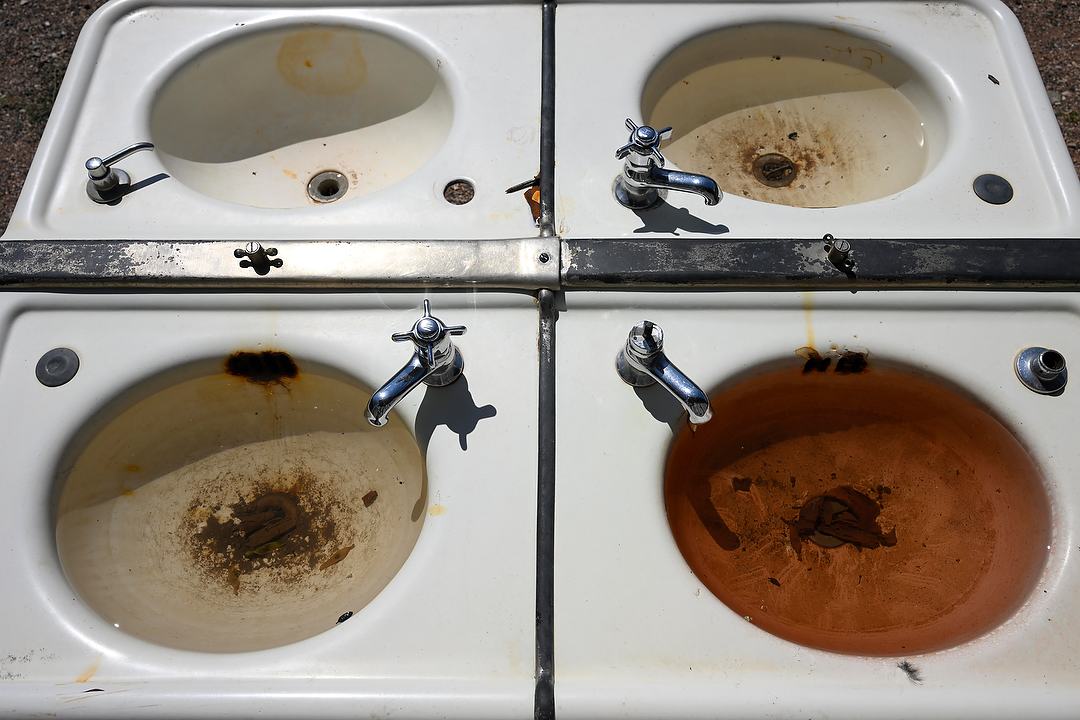
I could spend an entire day wandering this place, with so many interesting artifacts and details to be found. Nikon Z 8, Aperture Priority, Sunny white balance, ISO 64, 1/500 at f/9 in Matrix metering, 0.0 EV, Nikkor Z 24-120mm f/4 S lens at 28mm.
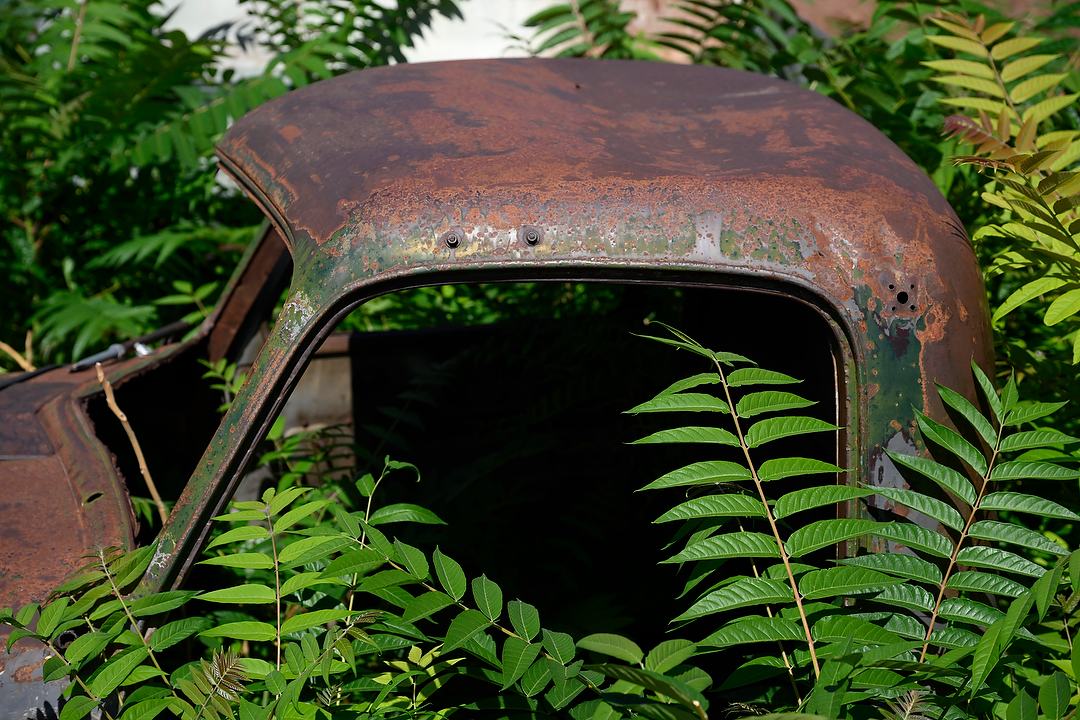
There are lots and lots of old trucks to photograph, you just need to pay attention to the signs that warn you to be on the lookout for rattlesnakes! Nikon Z 8, Aperture Priority, Sunny white balance, ISO 125, 1/1000 at f/5.6 in Matrix metering, -1.0 EV, Nikkor Z 24-120mm f/4 S lens at 79mm.
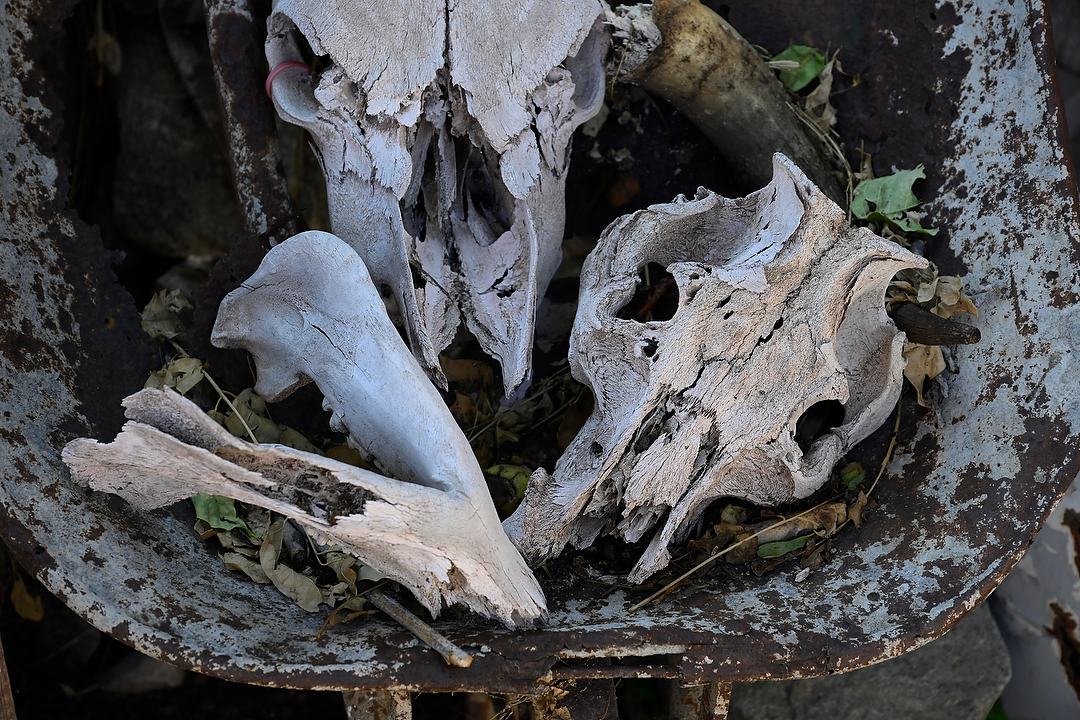
A collection of skulls in a rusty wheelbarrow. Nikon Z 8, Aperture Priority, Sunny white balance, ISO 125, 1/60 at f/5 in Matrix metering, -0.3 EV, Nikkor Z 24-120mm f/4 S lens at 110mm.
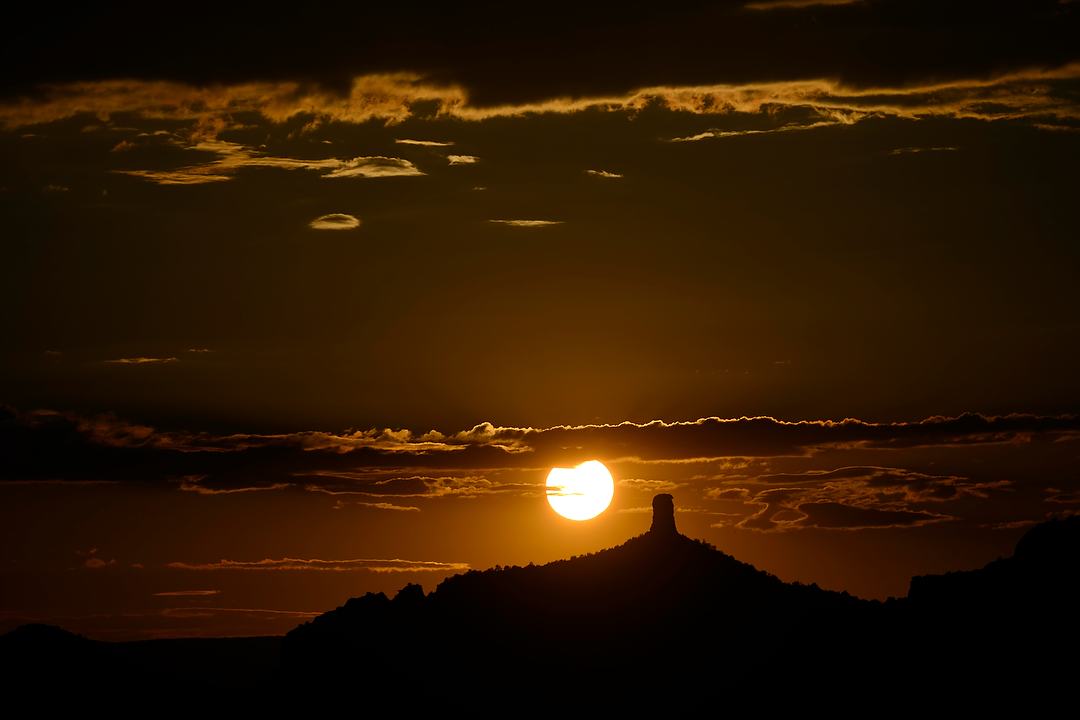
For our final sunset and night shoot, I took the group to a new place I’d discovered the first day in Sedona. Turned out to be a great spot to photograph sunset. Nikon Z 8, Aperture Priority, Sunny white balance, ISO 64, 1/4000 at f/8 in Matrix metering, -2.3 EV, Nikkor VR 70-300mm f/4.5-5.6E lens at 240mm.
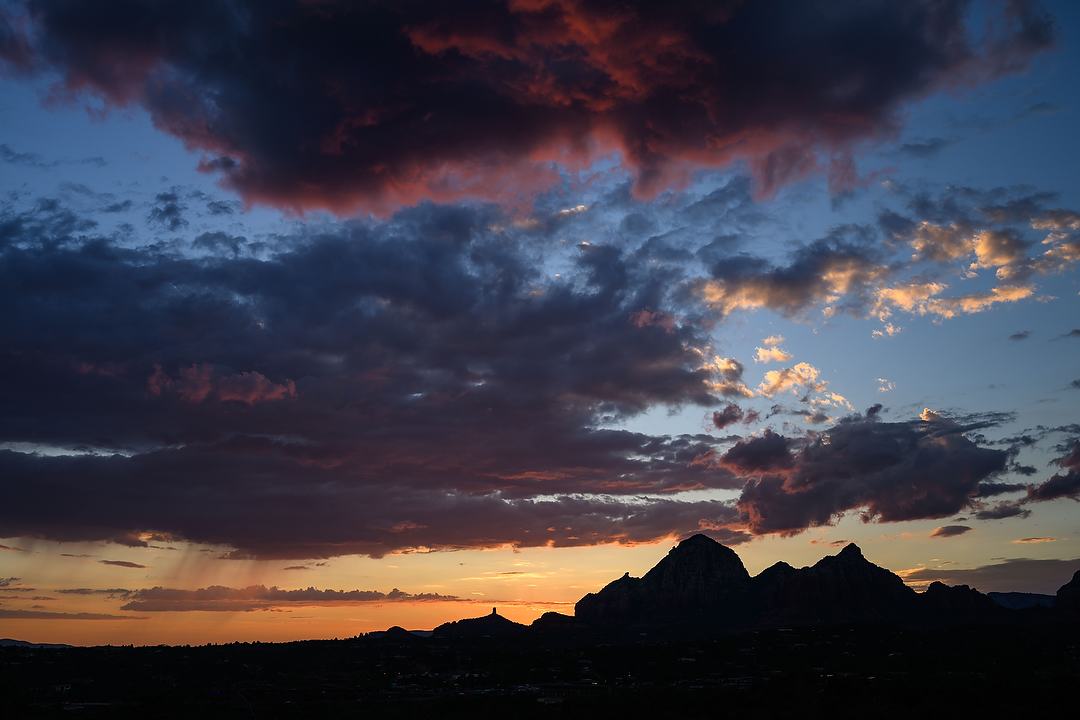
Did I mention it was a great place for sunset? And the clouds – oh my! Nikon Z 8, Aperture Priority, Sunny white balance, ISO 64, 1/100 at f/5.6 in Matrix metering, -1.0 EV, Nikkor Z 24-120mm f/4 S lens at 34mm.
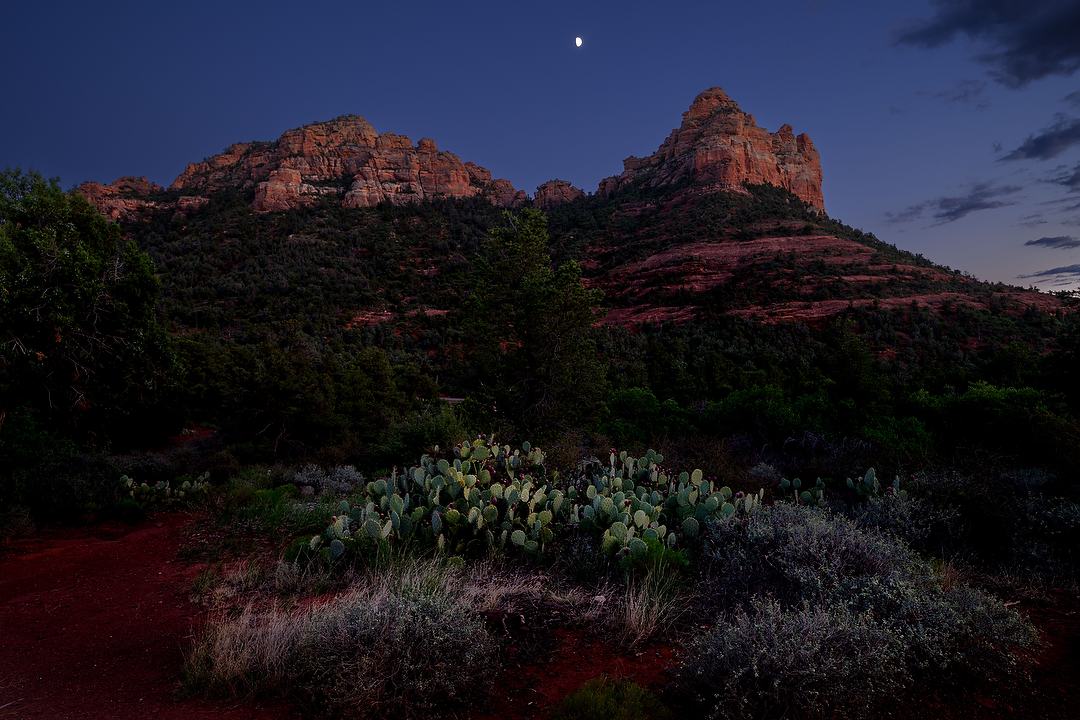
While this was the first of two spots I’d picked out to light paint, I actually preferred this frame, before I even started adding light. The glow on the cactus and grasses in the foreground is simply the last bit of light from sunset, brought up a bit in software. Nikon Z 8, Aperture Priority, Sunny white balance, ISO 125, 1/1.6 at f/5 in Matrix metering, -2.0 EV, Nikkor Z 14-24mm f/2.8 S lens at 20mm.
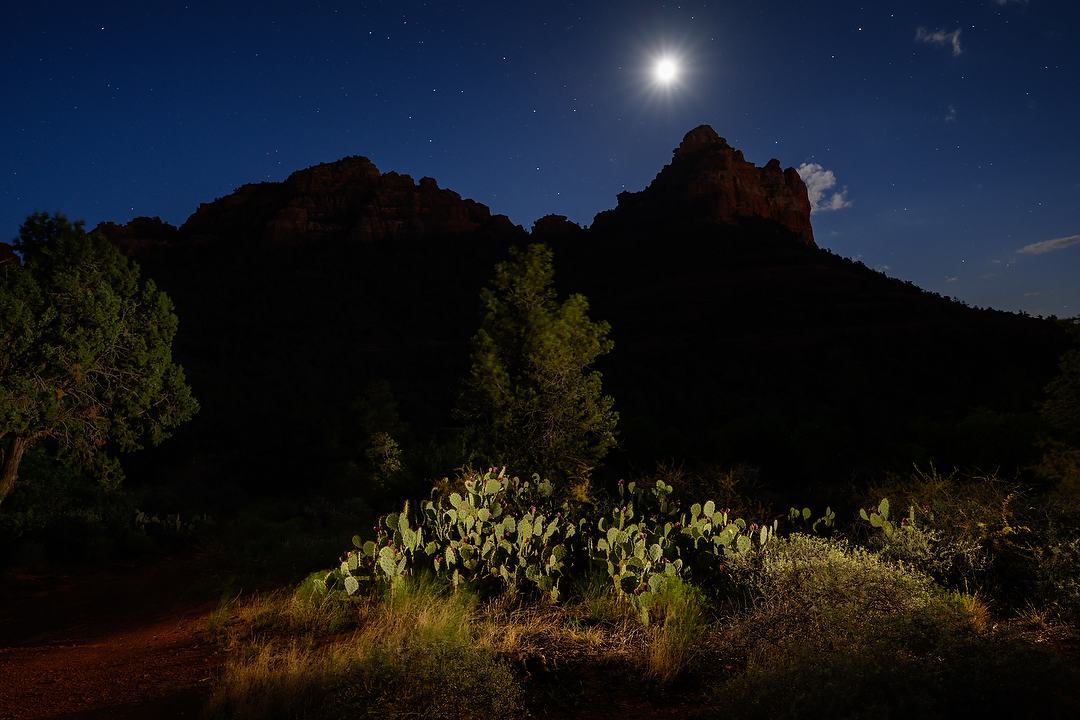
Same scene, only now I’m lighting it with two Lume Cubes on stands, one to the left and one to the right. Nikon Z 8, Manual exposure, Sunny white balance, ISO 640, 20-seconds at f/5 in Matrix metering, Nikkor Z 14-24mm f/2.8 S lens at 21mm. Photo copyright Reed Hoffmann.
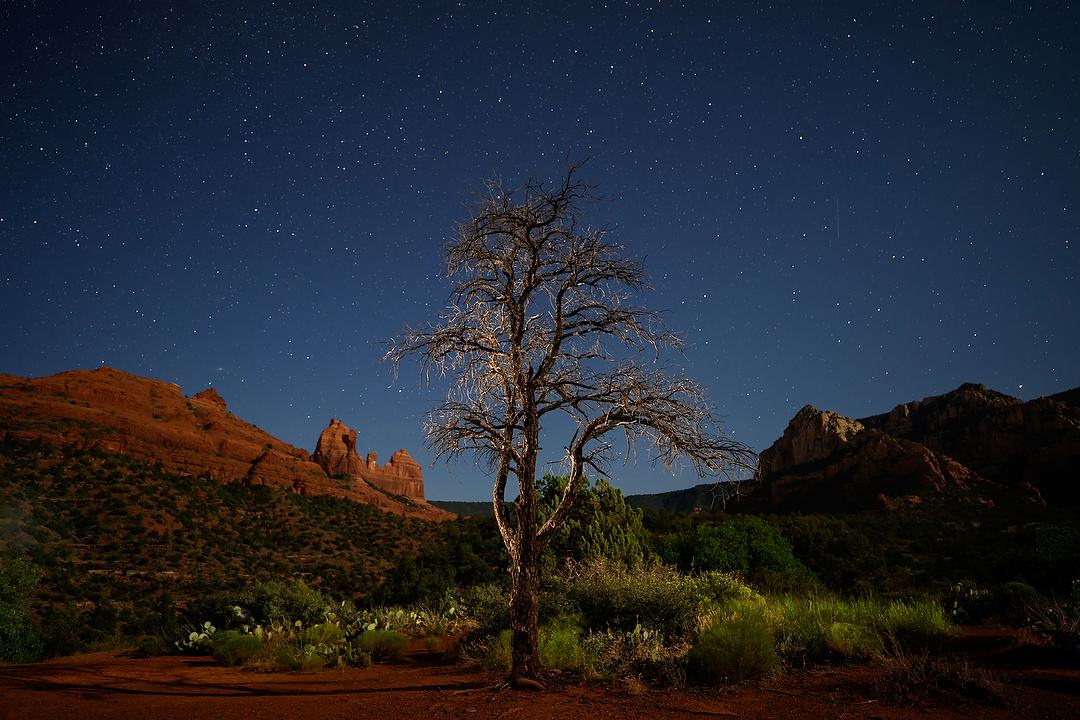
It was fitting that the last shoot of the week turned out to be my favorite. When I’d scouted this during the daytime, I thought it would work well to light paint. But the moonlight on the red rocks in the distance worked out even better than I’d hoped. I’m using two Lume Cubes here, one behind the tree and to the left, the other at far right to light the grasses. Nikon Z 8, Manual exposure, Sunny white balance, ISO 2000, 15-seconds at f/2.8 in Matrix metering, Nikkor Z 14-24mm f/2.8 S lens at 22mm.
(If you like this story, please share it with your friends and let them know about the links on photography that I post on my business Facebook page. I’m also on Instagram and Twitter, @reedhoffmann. And if you’re curious about the workshops I teach, you can find them here. Finally, you can subscribe to this blog on my home page.)

